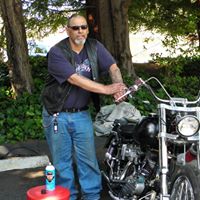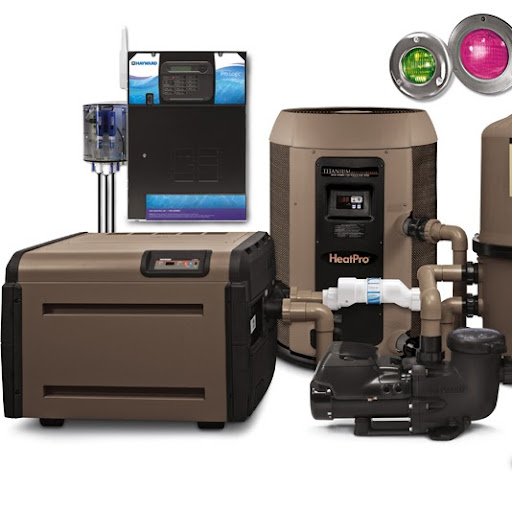Robert A Flynn
age ~91
from Arlington, WA
- Also known as:
-
- Robert Allyn Flynn
- Bob A Flynn
- Roberta Flynn
- Robt A Flynn
- Rob A Flynn
- Roberta F Lynn
Robert Flynn Phones & Addresses
- Arlington, WA
- Everett, WA
- Lake Forest Park, WA
- Torrance, CA
- 12303 Harbour Pointe Blvd, Mukilteo, WA 98275 • 4253158187 • 4253561126
- Snohomish, WA
- Great Lakes, IL
- 4729 260Th Pl NE, Arlington, WA 98223
Work
-
Position:Retired
Education
-
Degree:High school graduate or higher
Isbn (Books And Publications)


Normalization, Social Integration, and Community Services
view sourceAuthor
Robert Flynn
ISBN #
0839115245






Medicine Doctors

Dr. Robert M Flynn, Newport Beach CA - MD (Doctor of Medicine)
view sourceSpecialties:
Ophthalmology
Address:
312 Fullerton Ave Suite A, Newport Beach, CA 92663
9495486715 (Phone)
9495486715 (Phone)
Certifications:
Ophthalmology, 1973
Awards:
Healthgrades Honor Roll
Languages:
English
Education:
Medical School
University of California At Los Angeles
Graduated: 1967
Medical School
UCLA Med Center
Graduated: 1967
Medical School
Vet Affairs Med Center W La
Graduated: 1967
University of California At Los Angeles
Graduated: 1967
Medical School
UCLA Med Center
Graduated: 1967
Medical School
Vet Affairs Med Center W La
Graduated: 1967

Robert S. Flynn
view sourceSpecialties:
Gastroenterology
Work:
Richmond Gastroenterology Associates
5875 Bremo Rd STE 601, Richmond, VA 23226
8046732806 (phone), 8043309141 (fax)
5875 Bremo Rd STE 601, Richmond, VA 23226
8046732806 (phone), 8043309141 (fax)
Education:
Medical School
SUNY Upstate Medical University
Graduated: 2004
SUNY Upstate Medical University
Graduated: 2004
Procedures:
Hemorrhoid Procedures
Colonoscopy
Endoscopic Retrograde Cholangiopancreatography (ERCP)
Sigmoidoscopy
Upper Gastrointestinal Endoscopy
Colonoscopy
Endoscopic Retrograde Cholangiopancreatography (ERCP)
Sigmoidoscopy
Upper Gastrointestinal Endoscopy
Conditions:
Diverticulitis
Gastritis and Duodenitis
Gastroesophageal Reflux Disease (GERD)
Hemorrhoids
Irritable Bowel Syndrome (IBS)
Gastritis and Duodenitis
Gastroesophageal Reflux Disease (GERD)
Hemorrhoids
Irritable Bowel Syndrome (IBS)
Languages:
English
Spanish
Spanish
Description:
Dr. Flynn graduated from the SUNY Upstate Medical University in 2004. He works in Richmond, VA and specializes in Gastroenterology. Dr. Flynn is affiliated with Bon Secours St Marys Hospital, Chippenham Hospital and Southside Regional Medical Center.

Robert P. Flynn
view sourceSpecialties:
Diagnostic Radiology, Vascular & Interventional Rad
Work:
San Diego Imaging
7910 Frost St STE 100, San Diego, CA 92123
8585650950 (phone), 8586345990 (fax)
San Diego Imaging
765 Medical Ctr Ct STE 211, Chula Vista, CA 91911
6193976577 (phone), 6195028585 (fax)
7910 Frost St STE 100, San Diego, CA 92123
8585650950 (phone), 8586345990 (fax)
San Diego Imaging
765 Medical Ctr Ct STE 211, Chula Vista, CA 91911
6193976577 (phone), 6195028585 (fax)
Education:
Medical School
University of California, Los Angeles David Geffen School of Medicine
Graduated: 1987
University of California, Los Angeles David Geffen School of Medicine
Graduated: 1987
Languages:
English
Description:
Dr. Flynn graduated from the University of California, Los Angeles David Geffen School of Medicine in 1987. He works in Chula Vista, CA and 1 other location and specializes in Diagnostic Radiology and Vascular & Interventional Rad. Dr. Flynn is affiliated with Rady Childrens Hospital-San Diego, Sharp Chula Vista Medical Center, Sharp Coronado Hospital & Healthcare Center and Sharp Memorial

Robert Patrick Flynn
view sourceSpecialties:
Radiology
Diagnostic Radiology
Diagnostic Radiology
Education:
University of California at Los Angeles (1987)

Robert Eugene Flynn
view sourceSpecialties:
Radiology
Diagnostic Radiology
Diagnostic Radiology
Education:
The University of Texas Southwestern (1997)

Robert Mathew Flynn
view sourceSpecialties:
Ophthalmology
General Practice
General Practice
Education:
University of California at Los Angeles (1967)

Robert Lawrence Flynn
view sourceSpecialties:
Internal Medicine
Gynecology
Gynecology
Education:
Georgetown University (1961)
Us Patents
-
Engine Coolant Changing System
view source -
US Patent:7111651, Sep 26, 2006
-
Filed:Aug 25, 2004
-
Appl. No.:10/926538
-
Inventors:Robert E. Flynn - Covina CA, US
-
International Classification:B65B 1/04
-
US Classification:141 98, 141 65, 141 67, 141 92, 141231
-
Abstract:An engine cooling system liquid insertion and removal system has an adapter disposed in a vehicle radiator service opening via which old coolant is removed from the engine system by partial vacuum applied to an old coolant container via a conduit. New coolant is introduced via the adapter by atmospheric pressure from a portable container. Conduits interconnect the engine cooling system, the old and new coolant containers, and a source of partial vacuum applied to conduits.
-
Engine Oil Cleaning System
view source -
US Patent:20040020720, Feb 5, 2004
-
Filed:Mar 27, 2003
-
Appl. No.:10/381974
-
Inventors:Robert Flynn - Covina CA, US
-
International Classification:F16C003/14
-
US Classification:184/001500, 134/010000, 134/022180, 134/034000, 134/095100, 134/104400, 134/111000, 134/113000, 134/16900A
-
Abstract:An engine cleaning system has a cleaning solution container () having a filter element () therein and is adapted to establish a predetermined quantity of solution for a particular engine. Solution is pumped from the solution container () to the engine interior by the engine oil pump, and a solution drain line () connects the engine interior and the solution container. Oil and cleaning solution are pumped by the engine oil pump continuously during the cleaning process. The solution container has a removable closure for filter replacement and a drain valve () for solution and oil.
-
System For Cleaning And Servicing Engines
view source -
US Patent:20040079442, Apr 29, 2004
-
Filed:Oct 29, 2002
-
Appl. No.:10/283678
-
Inventors:Robert Flynn - Covina CA, US
-
International Classification:B65B003/04
B67C003/02
B65B001/04 -
US Classification:141/098000
-
Abstract:An engine cooling system liquid insertion and removal system has an adapter disposed in a radiator service opening via which old coolant is removed from the engine system by partial vacuum applied to an old coolant container via a conduit, and new coolant is introduced by atmospheric pressure. Conduits interconnect the engine cooling system, old and new coolant containers, and a source of partial vacuum applied to certain conduits.
-
Method And Apparatus For Cleaning Deposits And Residue From Internal Combustion Engines
view source -
US Patent:54526965, Sep 26, 1995
-
Filed:Feb 17, 1994
-
Appl. No.:8/198533
-
Inventors:Robert E. Flynn - Covina CA
-
International Classification:F02B 7700
-
US Classification:123198A
-
Abstract:A method and apparatus for removing internal carbon deposits and related residue and contaminants from fuel injected and carbureted internal combustion engine systems by delivering fuel to the inlet of the engine fuel pump while the engine is cranked by battery power to start the engine and then delivering an engine conditioning fuel, which is a mixture of normal engine fuel and a carbon cleaning agent, to the fuel pump inlet so that the conditioning fuel passes through and removes carbon deposits from the engine fuel injectors or carburetor, as the case may be, and is then combusted in the engine cylinders to power the engine. The effectiveness of the carbon cleaning operation is determined by monitoring the flow rate of normal engine fuel to the engine.
-
Fuel-Measuring Flow System For Diesel Engines
view source -
US Patent:44794657, Oct 30, 1984
-
Filed:May 2, 1983
-
Appl. No.:6/490456
-
Inventors:Robert E. Flynn - Covina CA
-
International Classification:F02M 3700
-
US Classification:123514
-
Abstract:A fuel-measuring flow system for diesel engines that provides a continuous metered flow of fuel from the storage tank to the operating engine, wherein a flow meter defined by a transducer having a metering orifice therein is located between the tank and injector pump of the engine to establish an accurate reading as to the amount of fuel being used by the engine, the returning unburned fuel being cooled and mixed with the fuel from the tank after the stored fuel passes through the flow meter. The system further includes a relay-valve device and a manifold member whereby the unburned fuel and stored fuel are mixed together prior to being pumped to the engine.
-
Engine Oil Cleaning System
view source -
US Patent:62989472, Oct 9, 2001
-
Filed:Oct 27, 2000
-
Appl. No.:9/699118
-
Inventors:Robert E. Flynn - Covina CA
-
International Classification:F16N 3300
B08B 900 -
US Classification:184 15
-
Abstract:An engine cleaning system has a cleaning solution container having a filter element therein and is adapted to establish a predetermined quantity of solution for a particular engine. Solution is pumped from the solution container to the engine interior by the engine oil pump, and a solution drain line connects the engine interior and the solution container. Oil and cleaning solution are pumped by the engine oil pump continuously during the cleaning process. The solution container has a removable closure for filter replacement and a drain valve for solution and oil.
-
Engine Conditioning Apparatus And Method
view source -
US Patent:58337652, Nov 10, 1998
-
Filed:Oct 26, 1995
-
Appl. No.:8/547730
-
Inventors:Robert E. Flynn - Baldwin Park CA
Robert A. Flynn - Baldwin Park CA -
International Classification:B08B 902
-
US Classification:134 2212
-
Abstract:Carbon deposits and related residue are removed from he internal surfaces of components of an internal combustion engine, particularly the fuel ports of a carbureted engine and the injection nozzles of a fuel injection engine, by circulating an engine conditioning fuel, through the engine utilizing a conditioning fuel pump, preferably driven by a fluid driven motor, for pumping conditioning fuel to the engine. The conditioning apparatus can detect leakage of the fuel pressure regulator of a fuel injected engine and can operate in both a one-line mode in which conditioning fuel flows one way from the apparatus to the engine and a two-line mode wherein the conditioning fuel is recirculated through the engine and conditioning apparatus. A preferred embodiment provides diagnostic features for checking the conditioning apparatus and certain engine components. These include a by-pass conduit between a flowmeter input side and an engine pressure regulator, check valve means to test opening pressure of the pressure regulator, a pressure control valve to restrict flow to reduce pressure below a set pressure regulator opening pressure to indicate leakage, a shut-off valve closable to provide indication of static system pressure produced by the engine fuel pump, and openable to provide indication of flow rate produced by the fuel pump.
-
Engine Conditioning Apparatus And Method
view source -
US Patent:52713610, Dec 21, 1993
-
Filed:Mar 16, 1992
-
Appl. No.:7/851656
-
Inventors:Robert E. Flynn - Covina CA
-
International Classification:F02B 7700
-
US Classification:123198A
-
Abstract:Carbon deposits and related residue and contaminants are removed from the fuel ports and internal surfaces of an internal combustion engine fuel system, particularly fuel injectors, carburetors, fuel pumps, fuel passages, and the like, by initially utilizing a priming pump to pump priming fuel to the engine from an external fuel source while the engine is being cranked to start the engine and then utilizing the engine fuel pump to pump a combustible, carbon removing conditioning fuel from the fuel source through the engine fuel system along a flow path which by-passes the priming pump so as to avoid restriction of the conditioning fuel flow by the priming pump and thereby increase the conditioning fuel flow rate sufficiently to permit simultaneous servicing of several engines.
Wikipedia References

Robert Flynn (Author)
Resumes

Robert Flynn
view sourceWork:
HAECO
2003 to 2000
CNC Programmer
2003 to 2000
CNC Programmer
Name / Title
Company / Classification
Phones & Addresses
President
WOODWORKER'S HARDWARE & SUPPLY, INC
Whol Hardware Abrasives & Adhesives · Whol Hardware Whol Industrial Supplies
Whol Hardware Abrasives & Adhesives · Whol Hardware Whol Industrial Supplies
PO Box 911247, Los Angeles, CA 90091
2321 Yates Ave, Los Angeles, CA 90040
5870 Smithway St, Los Angeles, CA 90040
3237220062, 3237220061, 8883839663
2321 Yates Ave, Los Angeles, CA 90040
5870 Smithway St, Los Angeles, CA 90040
3237220062, 3237220061, 8883839663
President
FIRST PRESBYTERIAN CHURCH OF FULLERTON
Religious Organization
Religious Organization
838 N Euclid St, Fullerton, CA 92832
7145297701
7145297701
President
Engine Clean Technology
Motor Vehicle Parts and Accessories
Motor Vehicle Parts and Accessories
5112 Heintz St, Baldwin Park, CA 91706
6268143969, 6268148738
6268143969, 6268148738
President
V. A. ANDERSON ENTERPRISES, INC.
Building Materials · Business Services
Building Materials · Business Services
400 Atlas St, Brea, CA 92821
570 W Lambert Rd, Brea, CA 92821
PO Box 1029, Brea, CA 92822
570 W Lambert Rd, Brea, CA 92821
PO Box 1029, Brea, CA 92822
Principal
Bob Flynn Consulting
Business Consulting Services
Business Consulting Services
5091 NW Ebony Ct, Silverdale, WA 98383
Managing
Rmf Smithway, LLC
Real Property Ownership & Management
Real Property Ownership & Management
2321 Yates Ave, Los Angeles, CA 90040
5870 Smithway St, Los Angeles, CA 90040
5870 Smithway St, Los Angeles, CA 90040
Other officer
ARONSON SECURITY GROUP, INC
Suite 10 SUITE 100, Renton, WA 98057
2338 W Royal Palm Rd STE J, Phoenix, AZ 85021
2338 W Royal Palm Rd STE J, Phoenix, AZ 85021
Robert Flynn MD
Ophthalmology
Ophthalmology
312 Fullerton Ave, Newport Beach, CA 92663
7148481215
7148481215
Lawyers & Attorneys

Robert Flynn - Lawyer
view sourceSpecialties:
Civil Litigation
Insurance Defense
Municipal Liability
Negligence
Toxic Torts
Insurance Defense
Municipal Liability
Negligence
Toxic Torts
ISLN:
912626688
Admitted:
1997
University:
State University of New York at Buffalo, B.S., 1993
Law School:
State University of New York at Buffalo, J.D., 1996

Robert Flynn - Lawyer
view sourceOffice:
Flynn Law Firm
Specialties:
Workers Compensation Law
Personal Injury Law
Bankruptcy Law
Criminal Law
Driving While Intoxicated
Automobile Franchises and Dealerships
Employment Law
Wrongful Termination
Automobile Accidents and Injuries
Securities Fraud
Business Litigation
Personal Injury Law
Bankruptcy Law
Criminal Law
Driving While Intoxicated
Automobile Franchises and Dealerships
Employment Law
Wrongful Termination
Automobile Accidents and Injuries
Securities Fraud
Business Litigation
ISLN:
907360689
Admitted:
1983
University:
San Bernardino Valley College, A.A., 1975; Tulsa University, B.A., 1979
Law School:
Oral Roberts University, J.D., 1982

Robert Flynn - Lawyer
view sourceOffice:
Flynn Law Firm, PC
Specialties:
Personal Injury
Wrongful Death
Spinal Injury
Automobile Accidents and Injuries
Products Liability
Construction Accidents
Medical Malpractice
Truck Accidents
Maritime Law
Aviation Law
Employment Law
Wrongful Termination
Discrimination
Alternative Dispute Resolution
Mediation
Arbitration
Civil Litigation
Commercial Litigation
Professional Liability
Construction Law
Professional Negligence
Legal Malpractice
Nursing Home Negligence
Wrongful Death
Spinal Injury
Automobile Accidents and Injuries
Products Liability
Construction Accidents
Medical Malpractice
Truck Accidents
Maritime Law
Aviation Law
Employment Law
Wrongful Termination
Discrimination
Alternative Dispute Resolution
Mediation
Arbitration
Civil Litigation
Commercial Litigation
Professional Liability
Construction Law
Professional Negligence
Legal Malpractice
Nursing Home Negligence
ISLN:
907360658
Admitted:
1973
University:
Boston College, A.B., 1970
Law School:
Boston College, J.D., 1973

Robert James Flynn Jr, Long Beach CA - Lawyer
view sourceAddress:
6731 E Premium St, Long Beach, CA 90808
Phone:
5624211260 (Phone)
Experience:
48 years
Jurisdiction:
California (1977)
Law School:
Western State Univ
Education:
Southern Illinois Univ, Undergraduate Degree
Western State Univ, Law Degree
Western State Univ, Law Degree
Memberships:
California State Bar (1977)
License Records
Robert George Flynn
License #:
50665 - Active
Issued Date:
Dec 15, 2000
Renew Date:
Dec 15, 2000
Type:
Land Surveyor Intern
Robert J Flynn
License #:
4019 - Expired
Category:
Nursing Home Administrator
Issued Date:
Jan 1, 1991
Robert J Flynn
License #:
15529 - Expired
Expiration Date:
Jul 31, 1985
Type:
Journeyman Electrician
Robert Flynn
License #:
P01469 - Active
Category:
Emergency medical services
Issued Date:
Jun 8, 1993
Expiration Date:
Aug 31, 2017
Robert Flynn
License #:
P01829 - Expired
Category:
Emergency medical services
Expiration Date:
Dec 31, 1999
Robert Mark Flynn
License #:
62436 - Expired
Category:
Nursing
Issued Date:
Oct 15, 2004
Effective Date:
Jul 23, 2013
Expiration Date:
Oct 31, 2014
Type:
Registered Nurse
Flickr
Plaxo

Robert Flynn
view sourceAltamonte Springs FLOne of my bosses told me I had an overdeveloped sense of right and wrong - as if that were a bad thing.

Flynn, Robert
view source
Robert Flynn
view sourceBorough of West Cape May

ROBERT FLYNN
view sourceParner at SJ Tech Services

Robert Flynn
view sourceUniversity of Ottawa

Robert Flynn
view sourcePresident at Pulse Media
Myspace
Youtube

Robert Chris Flynn
view source
Robert Allan Flynn
view source
Robert E Flynn
view source
Robert Flynn Lacno
view source
Robert L Flynn
view source
Robert E. Flynn
view source
Robert Ira Flynn
view source
Robert D. Flynn
view sourceClassmates

Robert W Flynn (Sanderson)
view sourceSchools:
James Barry-Robinson High School Norfolk VA 1971-1975
Community:
Shelia Daugherty

Robert Flynn
view sourceSchools:
Chapel Grade School Scranton PA 1946-1955
Community:
Inez Draper, Maureen Cawley

Robert Flynn
view sourceSchools:
Madison Heights Junior High School Anderson IN 1968-1972
Community:
Neal Brandon, Debra Delawter, Steve Denny, Denise Lennen

Robert Flynn
view sourceSchools:
St. Leo High School Ashley PA 1968-1974
Community:
Bobby Thomas, Marilyn Sabulski

Robert Flynn
view sourceSchools:
Pensacola Catholic High School Pensacola FL 1981-1985
Community:
Virginia Robinson, Victoria Bills

Robert Flynn
view sourceSchools:
Trinity High School Camp Hill PA 1965-1969

Robert Flynn
view sourceSchools:
St. Paul High School Owosso MI 1957-1961
Community:
Tom Kirby, Monica Allenbaugh, Mary Wagner, Kathy Bruckman, Mike Lafave

Robert Flynn
view sourceSchools:
Saint Paul School Owosso MI 1957-1961
Community:
Jamil Ali, Joanne Jankovic, John Clink
Googleplus

Robert Flynn
Work:
CVS Corporation - Cashier (2011-2012)
Education:
Dearborn Academy - Basics, North shore community college - Computers
Relationship:
Single
Bragging Rights:
Live at home and I attend north shore community college.

Robert Flynn
Work:
AT&T

Robert Flynn

Robert Flynn

Robert Flynn

Robert Flynn

Robert Flynn
Tagline:
What up?

Robert Flynn
Relationship:
Married
Get Report for Robert A Flynn from Arlington, WA, age ~91



















